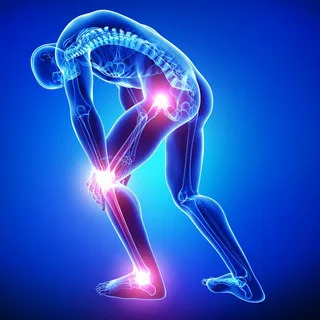Navigating Pain Relief: Insights from Medical Experts

Pain relief is a complex field that encompasses a variety of approaches, from pharmaceutical interventions to holistic therapies and lifestyle modifications. Medical experts play a crucial role in guiding patients through the maze of options available, ensuring safe and effective pain management tailored to individual needs. This article explores insights from medical professionals on navigating pain relief, emphasizing the role of pain relief medication alongside alternative treatments and considerations for comprehensive care.
Understanding Pain and its Management
The Science of Pain
Pain is a multifaceted experience involving sensory, emotional, and psychological components. It is a protective mechanism to alert the body to potential harm or injury. Effective pain management focuses on alleviating discomfort, addressing underlying causes, and improving overall quality of life.
Types of Pain
- Acute Pain: Typically arises suddenly in response to injury or illness and resolves once the underlying cause is treated.
- Chronic Pain: Persists beyond the expected healing time, lasting for weeks, months, or even years. Conditions like arthritis, fibromyalgia, and neuropathic pain fall into this category.
Role of Pain Relief Medication in Pain Management
Overview of Pain Relief Medication
Pain relief medication, including both over-the-counter and prescription drugs, plays a pivotal role in managing acute and chronic pain. These medications target pain receptors in the brain or reduce inflammation at the injury site, providing relief and improving function.
Types of Pain Relief Medications
- Nonsteroidal Anti-Inflammatory Drugs (NSAIDs): NSAIDs such as ibuprofen and naproxen are commonly used to reduce pain and inflammation associated with conditions like arthritis, muscle strains, and headaches.
- Acetaminophen: Widely used for its pain-relieving and fever-reducing properties, acetaminophen is effective for mild to moderate pain relief and is considered safer for long-term use than NSAIDs.
- Opioids: Reserved for severe pain management, opioids like morphine, oxycodone, and hydrocodone interact with opioid receptors in the brain and spinal cord to reduce pain perception. They are typically prescribed for acute pain or in cases of severe chronic pain when other treatments are insufficient.
Considerations with Pain Relief Medication
While effective, pain relief medications carry potential risks and side effects. Medical professionals must assess each patient’s medical history, current health status, and potential risk factors before prescribing medication. Monitoring for adverse effects and adjusting treatment plans accordingly are critical aspects of safe pain management.
Integrative Approaches to Pain Management
Combining Medication with Alternative Therapies
- Physical Therapy: Physical therapists employ various techniques, including exercises, stretches, and manual therapies, to improve mobility, reduce pain, and enhance overall function.
- Psychological Therapies: Cognitive behavioural therapy (CBT), relaxation techniques, and biofeedback help individuals manage chronic pain by addressing psychological factors that influence pain perception and coping mechanisms.
- Complementary and Alternative Medicine (CAM): Practices such as acupuncture, chiropractic care, massage therapy, and herbal remedies offer additional avenues for pain relief and symptom management, often with fewer side effects than medication alone.
Expert Insights on Holistic Pain Management
Dr. Sarah Johnson, Pain Specialist
“As a pain specialist, my approach involves a combination of evidence-based medicine and personalized care. While pain relief medication is often necessary, I emphasize the importance of holistic strategies to optimize outcomes and reduce reliance on medication. This may include integrating physical therapy, psychological support, and lifestyle modifications tailored to each patient’s needs.”
Dr. Michael Wong, Integrative Medicine Practitioner
“Integrative medicine offers a comprehensive approach to pain management, blending conventional treatments with complementary therapies. I frequently recommend acupuncture, mindfulness-based stress reduction, and nutritional counselling alongside pain relief medication to address both physical symptoms and underlying causes of pain.”
Challenges in Pain Management
Patient Education and Empowerment
Educating patients about their treatment options, including the benefits and risks of pain relief medication, empowers them to make informed decisions and actively participate in their care plan.
Addressing Opioid Crisis
The opioid epidemic highlights the importance of responsible prescribing practices, opioid stewardship, and alternative pain management strategies to minimize risks of addiction and overdose.
Future Directions in Pain Relief Research
Advancements in Pain Science
Ongoing research explores novel approaches to pain relief, including targeted drug therapies, gene therapy, and neurostimulation techniques. These innovations aim to provide more effective and personalized treatments while reducing reliance on traditional pain relief medication.
Conclusion
Navigating pain relief requires a collaborative effort between medical professionals and patients to develop personalized treatment plans that address individual needs and preferences. While pain relief medication remains a cornerstone of treatment for many, integrating alternative therapies and holistic approaches can enhance outcomes and improve quality of life. By staying informed about advancements in pain management and embracing a comprehensive approach, individuals can effectively navigate the complexities of pain while promoting overall well-being and recovery.
In conclusion, medical expertise is crucial in guiding patients through the myriad options available for pain relief. By understanding the role of pain relief medication alongside alternative therapies and considering individualized care approaches, healthcare providers can optimize pain management strategies and empower patients to achieve meaningful improvements in their quality of life.











